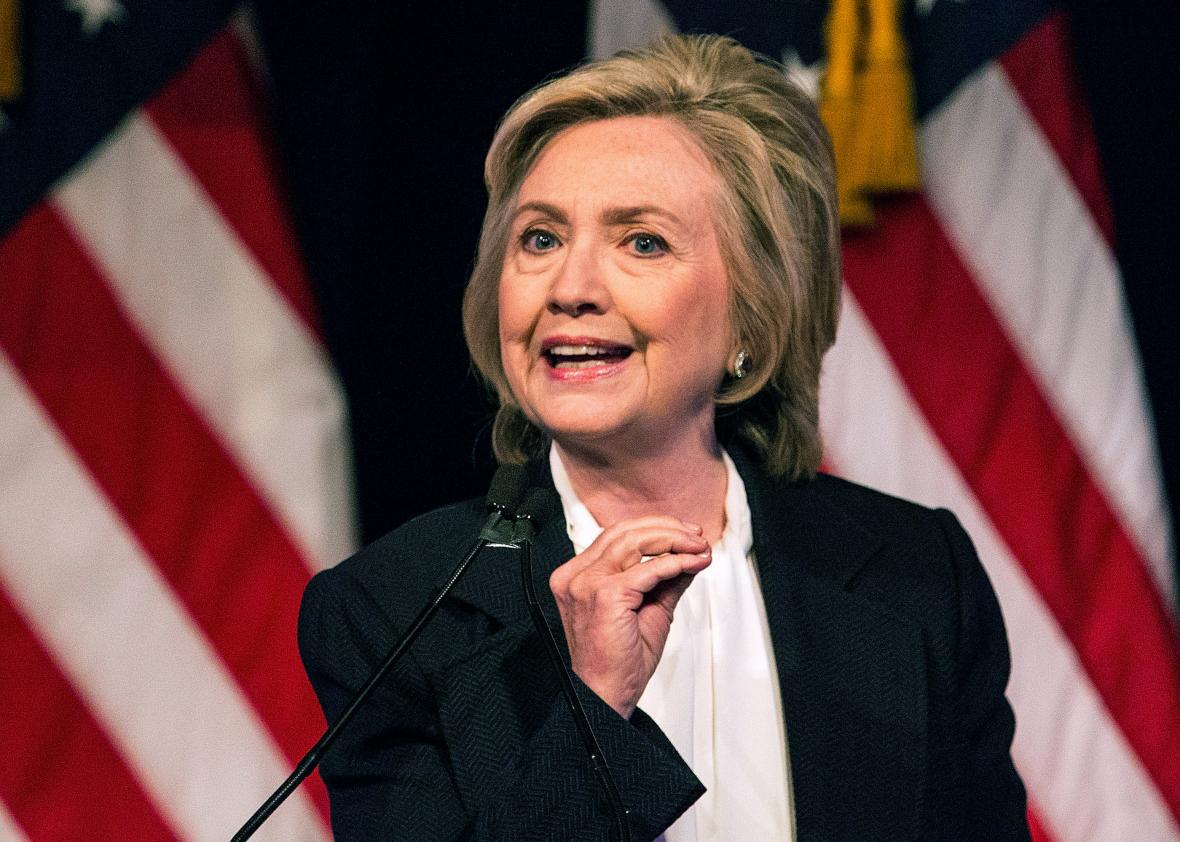According to the New York Post, a bank of elevators at Bergdorf Goodman was temporarily shut down on Friday so that Hillary Clinton could get a trim at the pricey John Barrett Salon on the ninth floor.
It’s hard to know what the Post thought was worse—that Clinton, like any celebrity, can get her hair done in a private room where no one can see her (or snap photos of her) or that she might have paid owner Barrett as much as $600 for a cut and another $600 for color.
“Hillary Clinton receives haircut that costs more than average American makes in a week,” howled the Washington Free Beacon. “Your jaw is about to drop when you find out how much Hillary paid for a haircut,” claimed IJR Review.
In presidential politics, the expensive haircut is one of those supposedly telling details—somehow meant to convey that a candidate or spouse is attempting to be one of the proletariat but has a secret life as a card-carrying member of the elite. It dates back to the early days of—naturally—the Clinton administration, when Hillary Clinton, on the advice of pal Barbra Streisand, began to see one Cristophe of Beverly Hills, who charged her $200 (or about $330 in 2015 dollars). By the time Bill decided to do the same, Hillary had moved on to New York’s Frederic Fekkai at $275 ($454 in 2015).
Then, in May 1993, Bill Clinton received what “may have been the most expensive haircut in history,” as Thomas Friedman speculated in the New York Times. The dubious story was that Air Force One tied up traffic at LAX in 1993 solely so the presidential locks could receive a $200 coif. The press went insane over “Hairgate,” even though the cut resulted in no actual delays on any commercial airlines. Controversial beauty treatments would continue to haunt the Clintons. In 1994, there was gossip claiming that Hillary Clinton did not tip after a visit to Gessner & Camp, a Coral Gables, Florida, salon, while Tipper Gore supposedly left a $90 gratuity.
We went about a decade without a Hairgate, a drought finally relieved during the 2004 presidential race by Matt Drudge, who outed John Kerry for flying Cristophe employee Isabelle Goetz from Washington to Pittsburgh. (It should come as no surprise to discover that Hillary Clinton was also reported to be a Goetz client.)
And then there was John Edwards. Long rumored to be vain about his plentiful locks, he was caught paying for $400 haircuts at Beverly Hills’ Torrenueva Salon, a crime no one ever would have known about had he not listed them on his candidate expense filings. (He later reimbursed his campaign.) Maureen Dowd, among others, went to town, stating more than a bit prophetically, “All the haircuts in the world may not save John Edwards from a blowout.” (The last salon Edwards was spotted patronizing was a North Carolina SuperCuts, which charges $12.95 for a styling.)
Republicans have been largely immune: No one made much of a fuss when first lady Laura Bush reportedly received a clipping from one Sally Hershberger, who charged $700. An exception, as it so often is, came in the highly flammable form of Sarah Palin, who in 2008 ran up a bill in the tens of thousands of dollars for traveling with not only a hairstylist but a makeup artist (the latter was Emmy-nominated for her work on So You Think You Can Dance?).
Clearly, women are in a bind here, as likely to be judged for not primping as for expensively primping. Just last week, Hillary Clinton took a question in a Facebook forum about the “hair and makeup tax” that women pay for their upkeep—a tax on both their wallets and their time.
But when it comes to Hairgates past and present, men—or at least male Democrats—are as likely to get dinged for their choices as women. Maybe the celebrity haircut is a gender-neutral easy get—an instant way to paint a candidate as privileged, out of touch, narcissistic. That it takes more than a bit of narcissism even to consider running for president is conveniently forgotten.
So what comes next? I’m hoping for a candidate who takes a page from Denmark’s first female prime minister, Helle Thorning-Schmidt. When heckled for wearing designer clothes, she responded without apology: “We can’t all look like shit.” In the meantime, I just want Donald Trump to release a financial-disclosure form accounting for whatever that is on top of his head.
